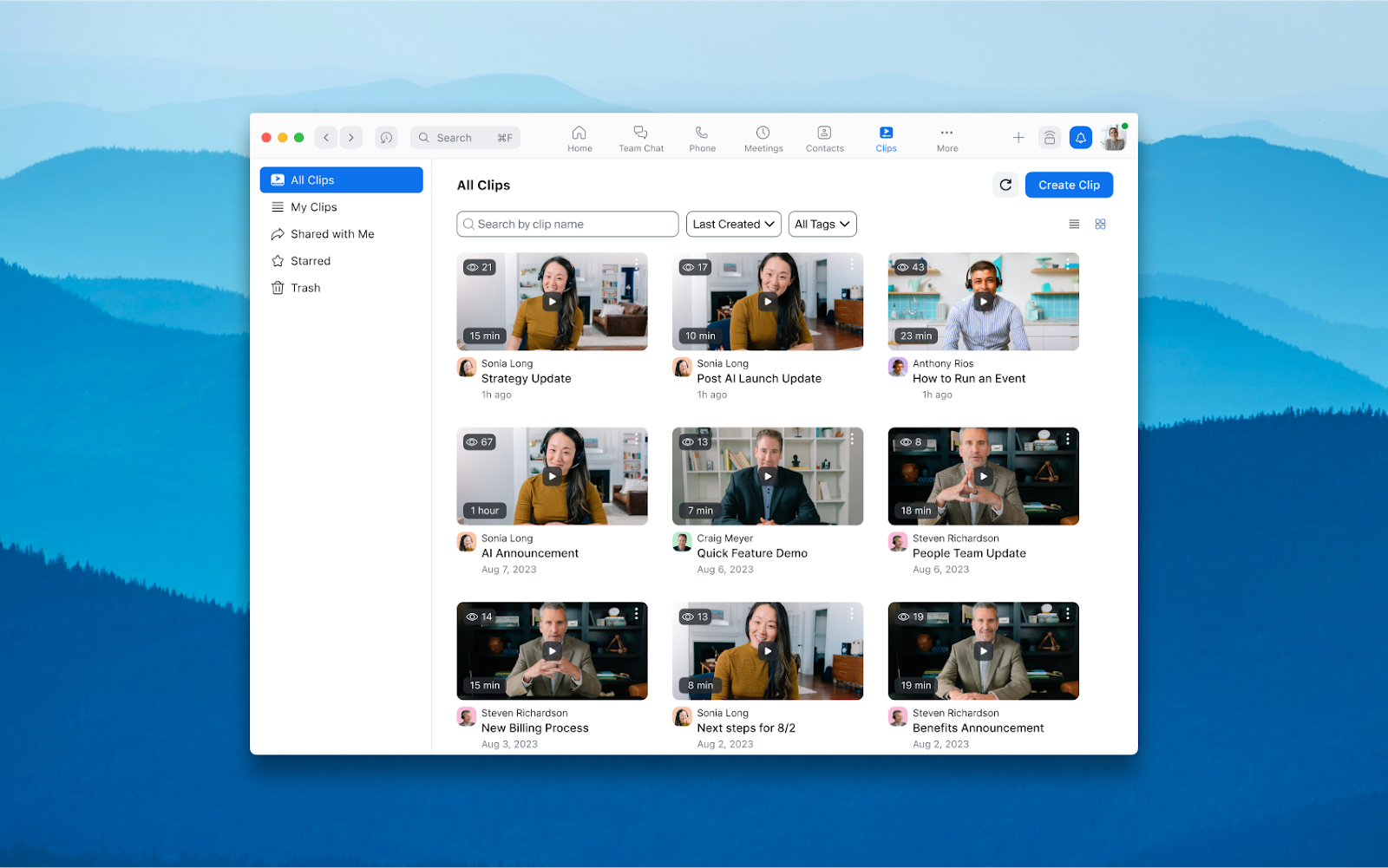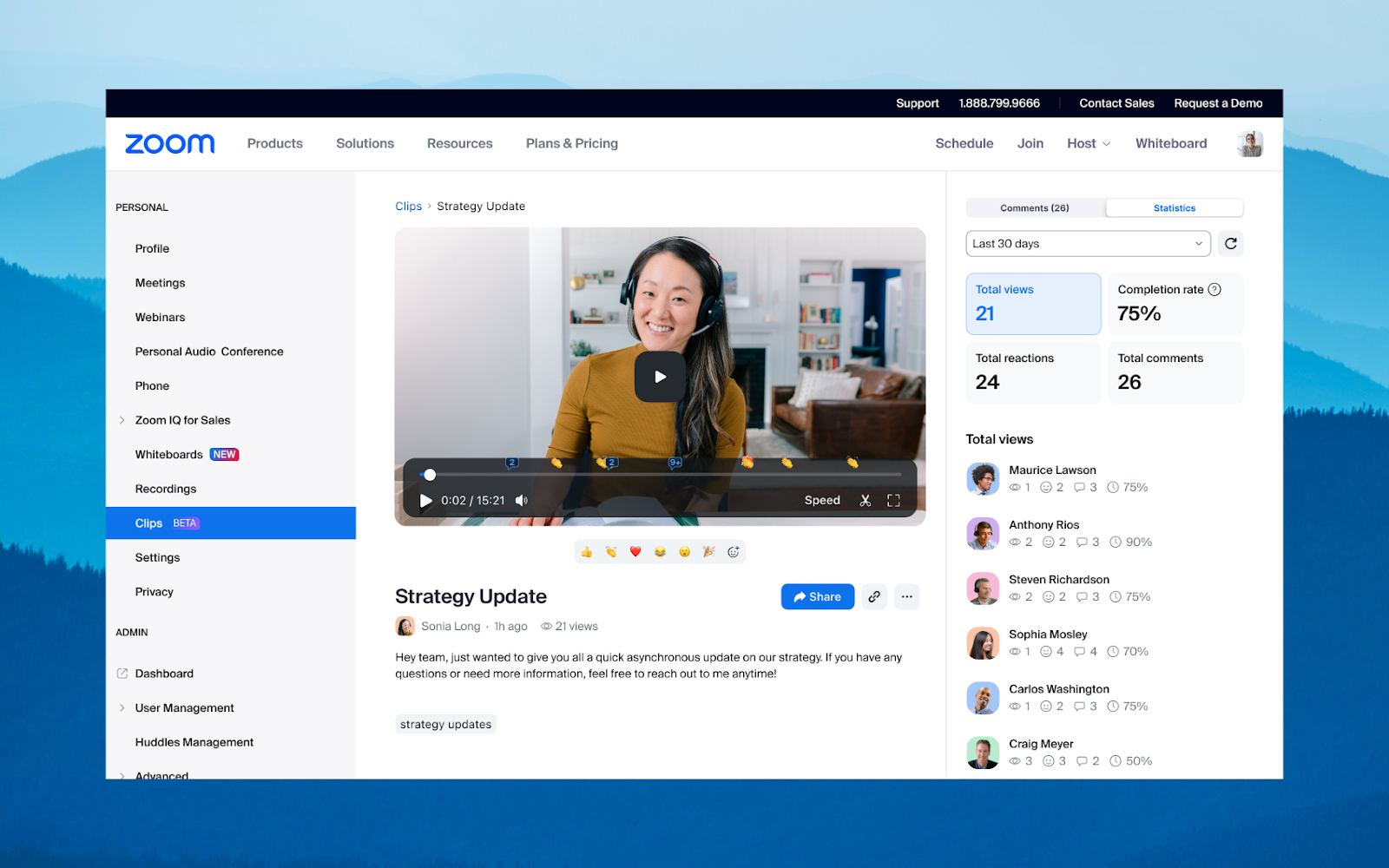In its continued attempt to diversify its product offerings, Zoom today launched a new asynchronous video tool, Zoom Clips, that lets users record, edit and share video clips without having to hop on a meeting.
Zoom Clips, available in public beta, provides a dedicated content library where users can manage, share, rename, search for, download or delete clips. Accessible from the desktop Zoom app, the Zoom web portal or the Mac menu bar and Windows system tray, Clips can capture both a screen and webcam feed — optionally with a virtual background — or only a portion of a user’s desktop.
Once clips are recorded via Clips, users can add a title, description and tags; trim unwanted sections; and share the recording via email from Zoom’s web portal. From that same portal, they can control who can view the clip (e.g., anyone with the link or only people in an organization), and view comments and metrics like completion rate and views.

Image Credits: Zoom
As my colleague Paul Sawers pointed out to me, Zoom already offered an asynchronous video tool in its Zoom Team Chat product: video messaging. But Clips appears to be a more robust solution — and a direct response to platforms like Weet, Loom and Bubbles. (In another important distinction, video messages in Team Chat are only shareable to those in the Team Chat channel.)
“Many people are turning to asynchronous video tools as a quick and easy way to record themselves and their screens and send high-quality, short-form videos to colleagues and customers,” David Ball, Zoom’s meetings and chat product manager, wrote in the blog post this morning announcing Clips. “With our new asynchronous video offering, you can demonstrate important information with teammates in a pinch, add a personal touch to your collaboration or just share a detailed project update without having to join a live meeting.”
The rise of asynchronous video comes as post-pandemic videoconferencing fatigue sets in. According to a 2022 survey, 80% of U.S. workers reported being exasperated from having to participate in frequent video calls, with 75% saying that they’d declined a meeting simply because they didn’t feel like attending.
Zoom, attempting to reposition itself in the face of intensified competition and slowing growth, has greatly expanded its range of products and strategic partnerships over the past year. Simultaneously, it’s engaged in cost cutting, announcing the layoff of 15% of its staff earlier this year.

Image Credits: Zoom
Just in May, Zoom said that it would collaborate with AI startup Anthropic to bring the latter’s Claude chatbot to Zoom’s various apps and services. And, after adding workplace collaboration features to compete with Slack and Calendly, including email and calendar tools, Zoom acquired Ireland-based employee communications platform Workvivo, its first purchase after customer service software startup Solvvy.
Zoom has also leaned heavily into AI technologies, including generative AI — not always with careful consideration of the consequences. Some critics argued that the sentiment analysis algorithms used in Zoom’s sales assistant tool, Zoom IQ for Sales, were fundamentally flawed. Others, meanwhile, have taken issue with the company’s policies around collecting customer data to train Zoom’s generative AI features.
But its investments appear to be paying dividends. In its most recent earnings report, Zoom beat expectations, reporting fiscal Q1 net income of $15.4 million on revenue of $1.11 billion, up from $1.07 billion a year ago.







